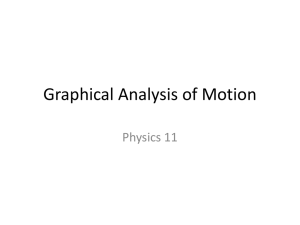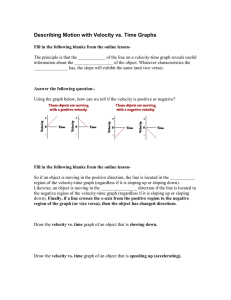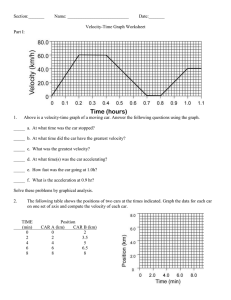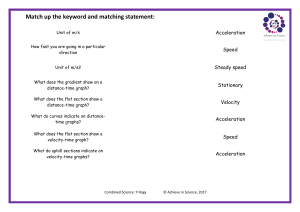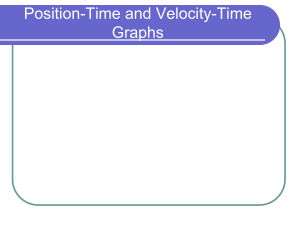Accelerated Motion: Physics Chapter 3 Presentation
advertisement
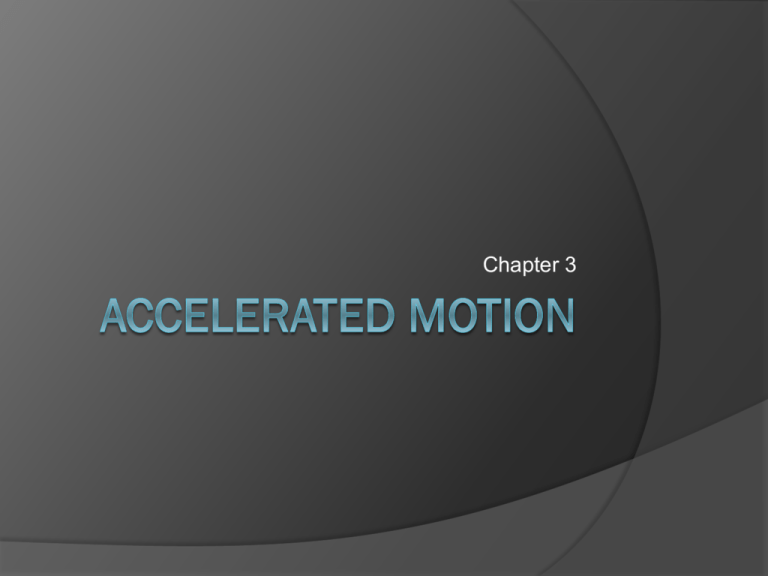
Chapter 3 3.1 Acceleration Non-uniform motion – more complex Velocity-Time Graph Useful to make Consistent with position-time graph and motion map Straight line versus curved line Slope of line give acceleration Units m/s/s Rate of change of velocity Graphs and Maps x (m) t (s) v (m/s) t(s) Position-time and velocity-time Motion map Acceleration Vector quantity Avg a = Dv/Dt Change in velocity over a time interval is average acceleration Change of velocity in an instant is instantaneous acceleration Found by calculating slope of tangent at specific time on velocity-time graph When would average and instantaneous be the same? Motion maps Show vectors on motion maps Positive versus Negative Assigning coordinate system is important Deceleration is NOT a physics term Kinematic curves How are position-time, velocity-time and acceleration-time graphs connected? 3.2 Constant Acceleration vf = vi + aavgDt df = di + vitf + ½ aavgtf2 vf2 = vi2 + 2aavgDd Graphs Equations can be derived from equations Displacement is area under velocity-time graph 3.3 Free Fall Motion of object when air resistance is negligible and action considered due to gravity alone Rock versus feather falling in air on earth On moon? On Jupiter? Acceleration due to Gravity All objects fall at the same rate on earth 9.80 m/s/s What does the motion map for an object falling look like? x-t graph, v-t graph Initial up, then down Motion map x-t graph v-t graph a-t graph Lab Newton’s 2nd lab Freefall lab, ch 3, pg 76-77
